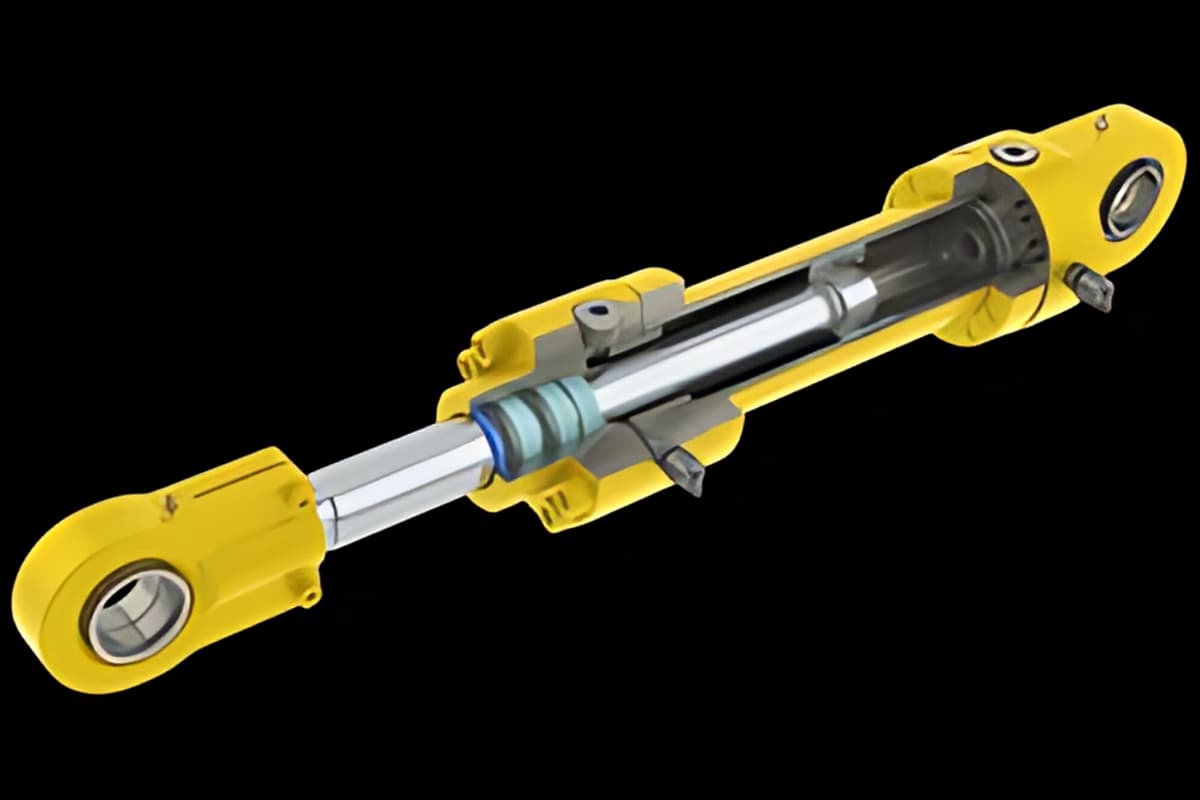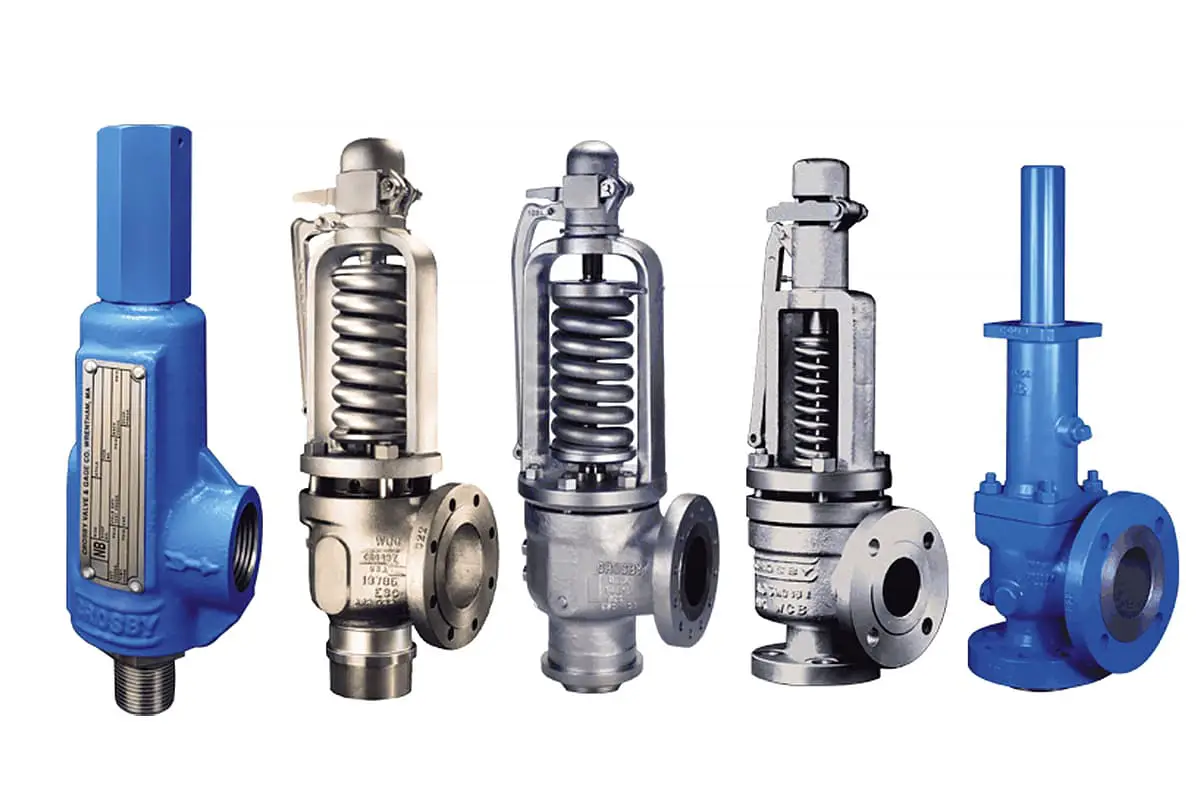
Have you ever wondered why the cooling medium used in quenching is so critical? Choosing the right quenching cooling medium can make or break the internal quality and shape of metal components. In this article, we explore the factors that influence the selection of quenching mediums, including their properties, the cooling performance, and practical application examples. By the end, you’ll understand how to ensure optimal hardening while minimizing distortions in your heat-treated parts.

Quenching is the most crucial stage in the heat treatment process and determines the internal quality and extent of distortion in the quenched components.

The technology of quenching cooling has seen continual advancements with the advancement of heat treatment technology. However, despite this progress, the cooling process remains complex and challenging due to its instantaneous nature and the limitations of observation and measurement. As a result, quenching cooling remains somewhat of a mystery.
For many years, the machinery industry has been guilty of “emphasizing cold and neglecting heat,” putting more emphasis on cold processing and neglecting the importance of hot processing. Meanwhile, the heat treatment industry tends to “emphasize heat and neglecting cold,” placing a greater emphasis on heating and ignoring the crucial role of cooling. This is an unusual and problematic phenomenon.
With my extensive experience in heat treatment, I would like to share my insights on the understanding and selection of quenching cooling media.
The term “ideal cooling speed” refers to the expected cooling rate at the nose of the C curve for a specific material and part that has been quenched. This rate should be higher than the critical cooling speed, which is the minimum speed required to ensure the workpiece undergoes the martensite transformation successfully.
In other temperature ranges, especially during the martensite transformation (Ms → Mf), cooling should be performed more slowly. This is often referred to as the principle of “quick cooling at high temperatures and slow cooling at low temperatures.”
Each type of steel and workpiece has its own unique requirements for “fast” and “slow” cooling. The concept of an “ideal quenching cooling medium” exists theoretically, as illustrated in Fig. 1.
It should be noted that the C curve for different types of steel can vary.
Unfortunately, it is not possible to find a single “ideal quenching cooling medium” that is suitable for quenching all types of steel and workpieces of different sizes.
Instead, the appropriate quenching cooling medium must be selected based on the specific conditions in order to achieve a hard quenched part with minimal distortion and good metallography.

Fig. 1 ideal quenching cooling medium curve
The quenching cooling medium used should be stable and not prone to decomposition, deterioration, or aging during use.
Different quenching oils and organic solvents have varying degrees of aging, and it is important to regularly adjust, update, and maintain them.
It is crucial to cool the different parts and surfaces of the workpiece as evenly as possible to prevent the formation of soft spots and blocks during the quenching process.
After quenching, it should be kept clean and be easily cleaned, and it should not corrode the workpiece.
During the quenching process, no significant amounts of smoke, toxic, or irritating gases will be produced, and the waste liquid from the quenched parts will not result in environmental pollution.
The cooling medium used in the quenching process is neither flammable nor explosive, making it safe to use.
The cooling medium used in quenching should not only be of high quality but also reasonably priced. However, if it is too expensive, it may not be well received by heat treatment businesses.
There are several factors that can impact the cooling performance of the quenching cooling medium, which can be broadly categorized into nine types.
The cooling capacity of the quenching cooling medium changes as the temperature changes. The cooling capacity of water and water-based cooling media decreases as the temperature increases, while that of oil and salt baths increases.
As the temperature increases, the fluidity of the medium improves, promoting heat dissipation and increasing its cooling capacity. As a result, it is essential to understand the specific cooling temperature requirements of the workpiece.
The surface tension has a direct impact on the cooling speed. Typically, quenching cooling media with low surface tension is in close contact with the surface of the quenched parts, allowing for fast heat dissipation and improved cooling capacity.
Stirring the quenching cooling medium can increase its heat transfer coefficient, quickly break down the vapor film, accelerate the cooling speed, and ensure that the quenched parts cool evenly.
Thermal conductivity, also referred to as heat conductivity, is a physical property that represents the ability of a substance to conduct heat. The higher the thermal conductivity, the stronger the cooling capacity of the material.
The higher the specific heat capacity of the quenching cooling medium, the faster the cooling speed.
Viscosity represents the friction force between the liquid molecules within a liquid during its flow. Quenching cooling media with high viscosity have poor fluidity, hindering convective heat dissipation, and result in poor cooling capacity. Conversely, quenching cooling media with low viscosity have a better cooling effect.
The term “vaporization heat” refers to the amount of heat needed to convert a unit mass of liquid into a gas at constant temperature.
Water has a high chemical stability and a large heat capacity, which is 8 times that of steel at room temperature.
Despite its low boiling point, the vaporization heat of water decreases as the temperature increases.
As the temperature increases, the cooling capacity of water drops significantly.
However, once the temperature of the water reaches 80℃, its cooling capacity remains relatively stable and maintains a quenching intensity of approximately 0.72.
The addition of additives is used to alter the cooling performance. If a small amount of salt or alkali is added to the water, it can significantly increase its cooling capacity.
When polyvinyl alcohol is added, a thin plastic film forms on the surface of the quenched parts, reducing the cooling speed due to its poor thermal conductivity.
Adding oil and soap to the water creates a suspension or emulsion that enhances the formation of a steam film, increases its stability, and decreases the cooling capacity.
Additionally, oxidants, brighteners, rust inhibitors, and antiseptics are often added to modify other properties of the quenching cooling medium, each having varying effects on the cooling performance.
Overall, the addition of additives often serves multiple purposes.
The impact of the environment on cooling capacity is often overlooked. The cooling effect of a medium at the same temperature can vary between winter and summer, and the quenching effect can differ between day and night.
Numerous evidence shows that many heat treatment quality incidents are related to the choice of quenching cooling medium. Improper selection or operation of the medium can result in wasted quenched parts.
For this reason, the proper use of quenching cooling medium is essential to ensure product quality. Regardless of the medium chosen, it is crucial to achieve uniform quenching effects:
The appropriate quenching cooling medium should be selected based on the heat treatment technical requirements, material, shape, and other specific conditions of the quenched parts. The following five basic principles should be considered:
(1) Importance of Carbon Content in Steel
Carbon is a crucial element in all types of steel. The carbon content has a significant impact on the properties and quenching effect of the steel.
For low-carbon steel with a carbon content of less than 0.5% (mass fraction), quenching can be done using salt water, alkaline water, organic solvents, etc.
Medium and low alloy structural steel are typically double quenched or cooled at a relatively slow rate using a medium.
Carbon tool steel, which requires high heat treatment and has poor hardenability, is usually quenched using an alkali bath or nitrate bath, and oil cooling is rarely used.
(2) Hardenability of Steel and Quenching Cooling Medium
The hardenability of steel can be determined by the “C” curve. Steel with poor hardenability requires faster cooling, while steel with good hardenability requires slower cooling.
It is crucial to choose an appropriate quenching cooling medium based on the hardenability of the steel.
(3) Effective Diameter of the Workpiece
Each type of steel has a critical diameter for quenching. When the surface of the quenched part cools down to the Ms point, the cooling speed of the medium decreases significantly and the heat inside the workpiece also decreases. The undercooled austenite within a certain depth on the surface of the workpiece is difficult to cool below the Ms point.
For thicker workpieces, a faster low-temperature cooling speed should be selected to achieve sufficient quenching layer depth. On the other hand, for thin workpieces, a quenching cooling medium with low temperature and low cooling rate can be used. The distribution curve of the maximum allowable cooling speed indicates that thick workpieces can be cooled at a high speed, while thin workpieces should be cooled at a low speed.
(4) Complexity of Quenched Parts
Based on the analysis of the minimum allowable cooling speed distribution curve, workpieces with complex shapes, particularly those with inner holes or deep concave surfaces, should be quenched with a cooling medium that has a short steam film stage to reduce quenching distortion and the need for hardening inner holes.
For workpieces with relatively simple shapes, a quenching cooling medium with a slightly longer steam film stage can be used. The maximum allowable cooling speed distribution curve shows that the allowable cooling speed for workpieces with complex shapes is low, while it is high for workpieces with simple shapes.
(5) Allowable Deformation
Quenched parts should have minimal distortion and a narrow cooling speed band. When the allowable distortion is large, a wide cooling speed band is acceptable. A medium that can generally achieve quenching hardness can be used for the allowable cooling speed band. The cooling speed band of the workpiece can be shortened through isothermal quenching or step quenching.
Due to the variety of workpieces and different heat treatment requirements, there are numerous quenching and cooling media options. Even the same type of workpiece quenched with different media can result in the same surface hardness, making it difficult to select the right quenching and cooling media. Based on the principles of economy and rationality, the most suitable quenching cooling medium is selected.
The so-called neutral salt quenchant generally refers to two formulations:
The first type: 50% BaCl2 + 30% KCl + 20% NaCl (mass fraction), melting point 560 ℃, service temperature 580 ~ 620 ℃, suitable for effective diameter ≤ 20mm, can ensure the cooling speed within the temperature range of 1000 ~ 800 ℃ of the workpiece ≥ 7 ℃ / s, and prevent the precipitation of eutectic carbide from affecting the performance of the tool.
The second type: 48% CaCl2 + 31% BaCl2 + 21% NaCl, melting point 435 ℃, service temperature 460 ~ 550 ℃.
The phase diagram is shown in Fig. 2. For the convenience of batching, the factory changed it to 50% CaC12 + 30% bac12 + 20% NaC1, with a melting point of 440 ° C and a service temperature of 460-550 ° C.
Applicable to high-speed steel workpieces with an effective diameter less than 40mm.
The neutral salts of the two formulations are utilized differently.
It is recommended to use calcium-based salts when the furnace is opened continuously for more than five days per week, as these salts have a strong temperature absorption capacity and are readily deliquescent in the air.
For small quenched parts and infrequent furnace openings, barium-based salt is an appropriate choice.

Fig. 2 ternary phase diagram of CaCl2, BaCl2 and NaCl
Nitrate refers to the four salts of NaNO3, KNO3, NaNO2 and KNO2.
As the quenchant, few single components are used, and two or three mixed salts are commonly used.
The formula and melting point are shown in Fig. 3.
The most used formula is: 55% KNO3 + 45NaNO2, melting point 137 ℃, use temperature 160-550 ℃;
50% KNO3 + 50% NaNO2, melting point 140 ℃, service temperature 160-550 ℃.
This solution is used for quenching low alloy steel products and for isothermal quenching of high speed steel and high alloy steel workpieces.
Some companies employ nitrate salt bath as the quenching fluid after carburizing large gears, thus resolving the challenge of heat treating large gears.

Fig. 3 melting curve of nitrate system
There are mainly two nitrate water and three nitrate water.
① The two nitrate water is 25% NaNO3 + 25% NaNO2 + 50% water, and the service temperature is less than 60 ℃.
The use of nitrate salt bath for isothermal quenching of 45 steel small-sized taps, dies, and workpieces solves not only the issue of quenching cracks, but also ensures relatively uniform quenching hardness.
In industrial production, carbon tool steel molds with sharp corners, grooves, and varying cross-sectional sizes are often encountered.
The desired hardness level is 59-63HRC, but water quenching can lead to cracks and oil quenching is not hard enough, making it difficult to achieve the desired quality using either method alone.
The nitrate salt bath isothermal quenching solves this problem. During this process, the surface of the workpiece will display white nitrate bubbles, estimated to be 1s/5mm in the nitrate water, at a temperature of around 200°C.
The workpiece is then immediately placed into a 180°C nitrate bath for isothermal quenching for 30-60 minutes, resulting in a workpiece without cracks, minimal deformation, and meeting the required hardness level.
Some individuals have used boiling water quenching for 45 steel as an alternative to quenching and tempering, achieving positive results.
For 45 steel with a diameter of 40mm to 80mm, heating the steel to 840°C and quenching it in boiling water results in a hardness of approximately 250HBW, which is highly uniform.
Boiling water quenching can replace the normalizing treatment of 45 steel as the final heat treatment step.
High-speed steel can also be quenched in boiling water at 850-870°C instead of the traditional quenching and tempering treatment.
Bearing steel undergoes a double refining treatment with boiling water quenching.
As the cooling rate of boiling water is slower than oil, there is no need to worry about cracking caused by boiling water quenching.
The process involves quenching the bearing steel in boiling water immediately after final forging, cooling the workpiece to 500-400°C, and air cooling the water. Then, annealing the workpiece at 730-740°C for 3 to 4 hours and air cooling after furnace discharge results in ultrafine grains and fine carbides.
There are numerous other applications of boiling water quenching, too many to list individually. When used properly, it can conserve energy and enhance efficiency.
This is a type of quenching cooling medium that is prepared by the factory and results in a visually appealing and corrosion-resistant workpiece after quenching.
There are two formulations with distinct colors:
① 70% NaNO3 + 20% KNO3 + 10% NaNO2, which results in a black workpiece after quenching.
② 70% NaNO2 + 20% KNO3 + 10% NaNO3, which results in a blue workpiece after quenching.
The three nitrates are evenly mixed in the specified proportions, and then an appropriate amount of water is added to create a supersaturated solution. The solution is then heated to 40-60°C for use.
PAG has a unique reverse solubility characteristic, meaning its solubility in water decreases as the temperature increases.
The cooling speed can be controlled by adjusting the concentration, temperature, and stirring of the solution.
PAG series coolants have a quenching capability that falls between water and oil, making them versatile for use in a wide range of applications.
Since its introduction in the United States in the 1960s, PAG has become a widely used solution in the heat treatment industry, and has successfully replaced alkaline water and oil for quenching and cooling carbon steel and low alloy steel.
Quenching oils have been categorized into several types, including ordinary quenching oil, bright quenching oil, fast quenching oil, fast bright quenching oil, ultra-fast quenching oil, vacuum quenching oil, graded quenching oil, and isothermal quenching oil.
While quenching oil has many benefits as a quenching cooling medium, its drawbacks are also significant. For instance, it produces oil smoke that pollutes the environment and poses a risk to human health, it is prone to aging and igniting, and the disposal of waste oil is a challenging issue.
In the tool and die industry, it is suggested to phase out the use of quenching oil and develop and adopt new quenching cooling mediums that are energy-saving and environmentally friendly.
High hardenability steel with small dimensions can be gas quenched.
The cooling capacity of the gas is dependent on the type, pressure, and flow rate of the gas.
High-speed steel mechanical blades with a thickness less than 20mm can be directly air cooled after induction heating, resulting in a high hardness above 63HRC.
Cr12 type high alloy steel can also be quenched in air, and for improved cooling speed, it can be cooled with a blowing method.
Templates with an effective size greater than 50mm can even be cooled on a water-cooled copper plate.
In recent years, there has been rapid growth in the development of vacuum high-pressure gas quenching. The commonly used cooling gases include N2, He, H2, and Ar.
H2 has the best thermal conductivity but is highly flammable and can cause explosions when mixed with air, making it an unsafe option. It also causes decarburization of steel above 1000°C, limiting its application.
N2 has poor cooling capabilities, but it is affordable and safe, making it widely used in gas quenching.
The choice and use of a quenching cooling medium for heat treatment has a significant impact on not only product quality and economic benefits, but also the survival and growth of the enterprise.
It is important to select the best quenching cooling medium based on the material and performance requirements of the enterprise’s quenching workpieces, to ensure successful hardening, minimize deformation, and achieve desired performance.








